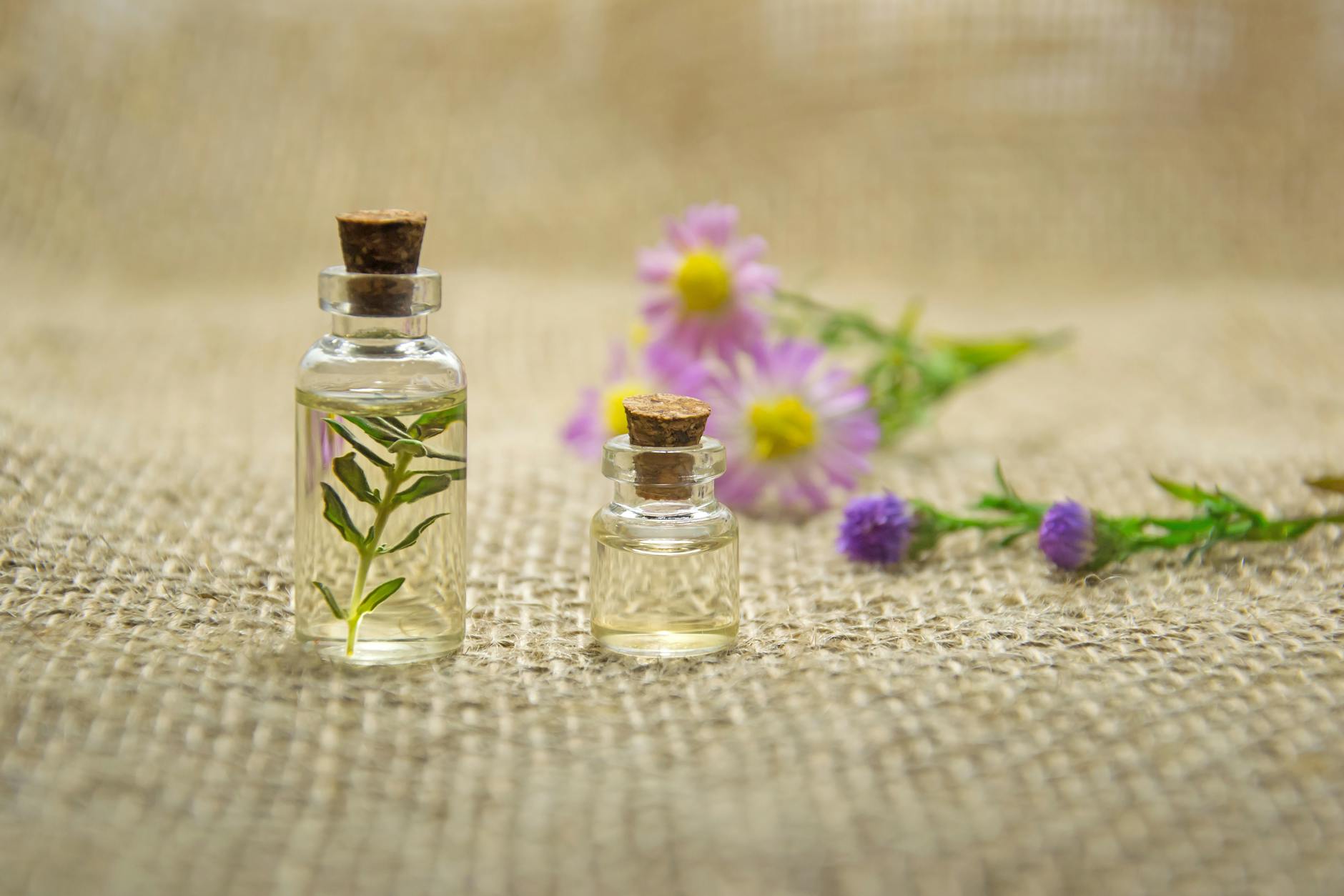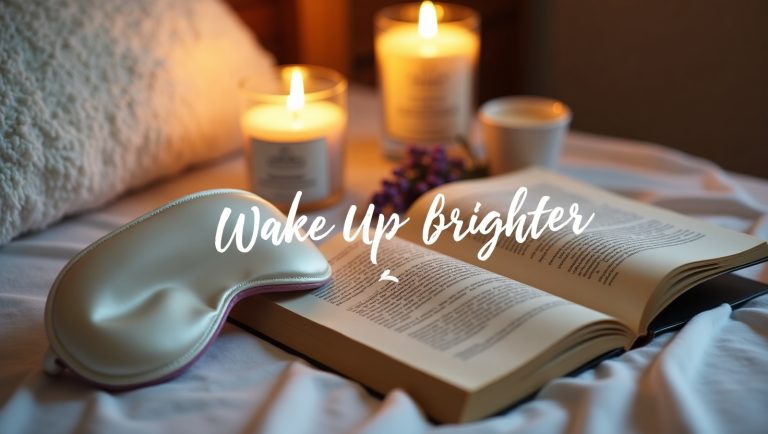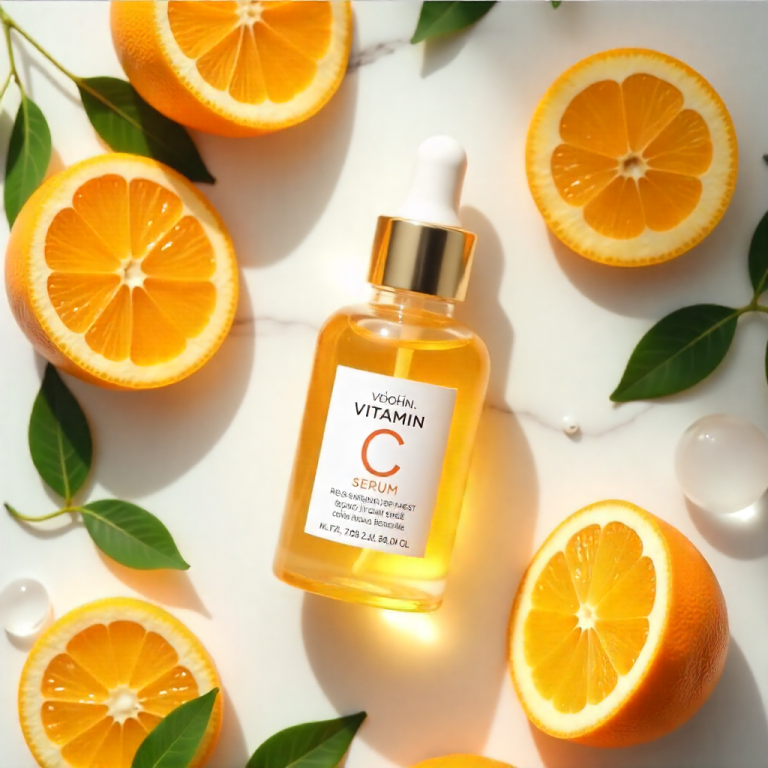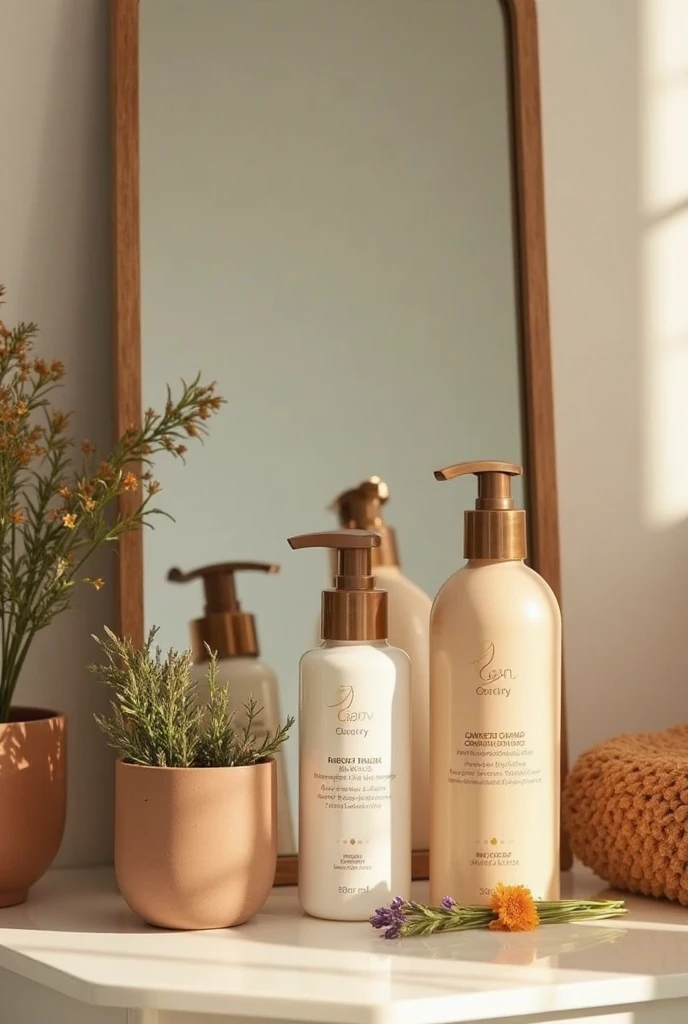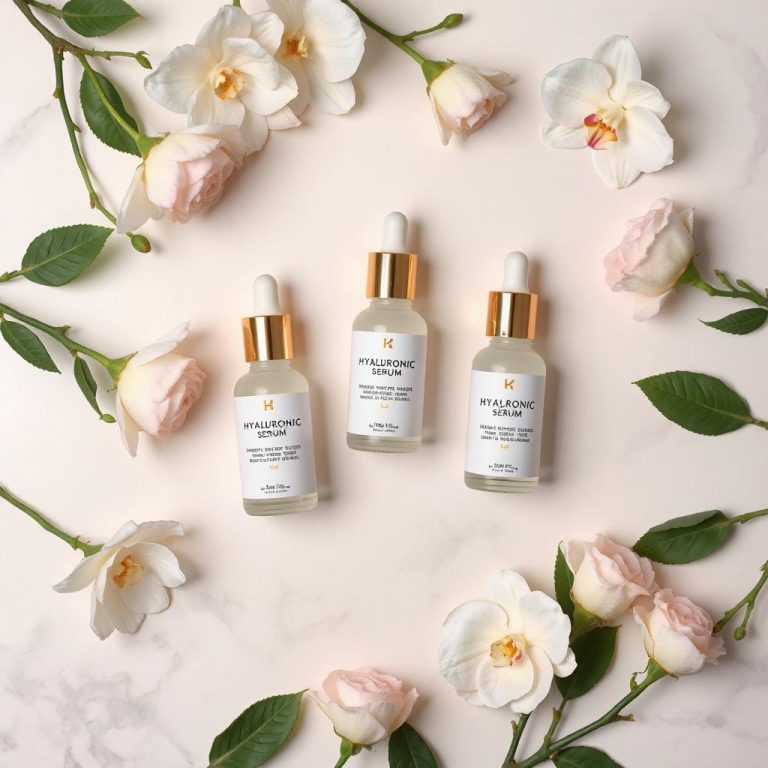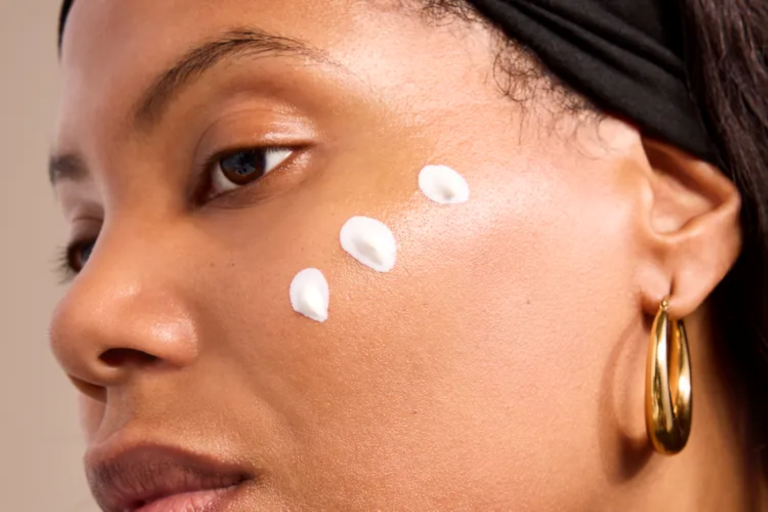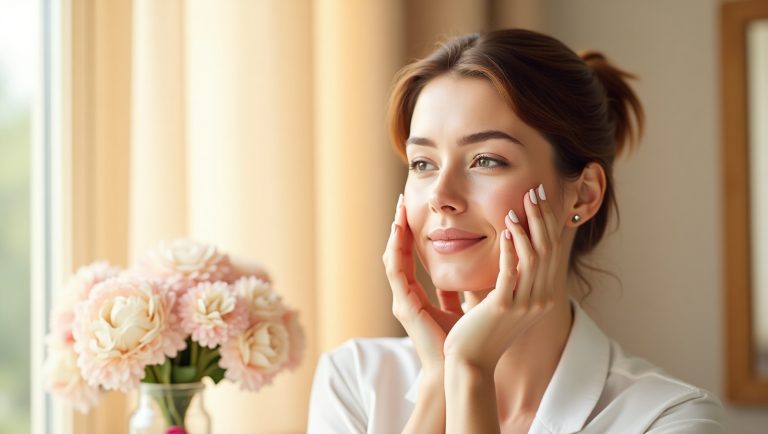Aromatherapy 101: Essential Oils for Stress, Sleep, and Energy
Are you feeling overwhelmed, exhausted, or struggling to find balance in your daily life? Imagine having a natural, aromatic solution at your fingertips that could melt away stress, improve your sleep quality, and boost your energy levels. Welcome to the world of aromatherapy, where the power of essential oils can transform your well-being! 🌿✨
In this guide to “Aromatherapy 101,” we’ll explore how these concentrated plant extracts can become your new secret weapon against modern-day challenges. From lavender’s calming embrace to peppermint’s invigorating zest, you’ll discover a range of essential oils tailored to your needs. We’ll delve into the science behind aromatherapy, reveal the most effective oils for stress relief, sleep improvement, and energy boosting, and share practical application methods to incorporate these aromatic allies into your daily routine.
Get ready to embark on a sensory journey that will not only tantalize your nose but also revolutionize your approach to self-care. Whether you’re a curious beginner or looking to expand your aromatherapy knowledge, this blog post will equip you with everything you need to create your own personalized aromatherapy toolkit. Let’s dive in and unlock the potential of essential oils to enhance your mind, body, and spirit! 🌟🧘♀️💆♂️
Understanding Aromatherapy
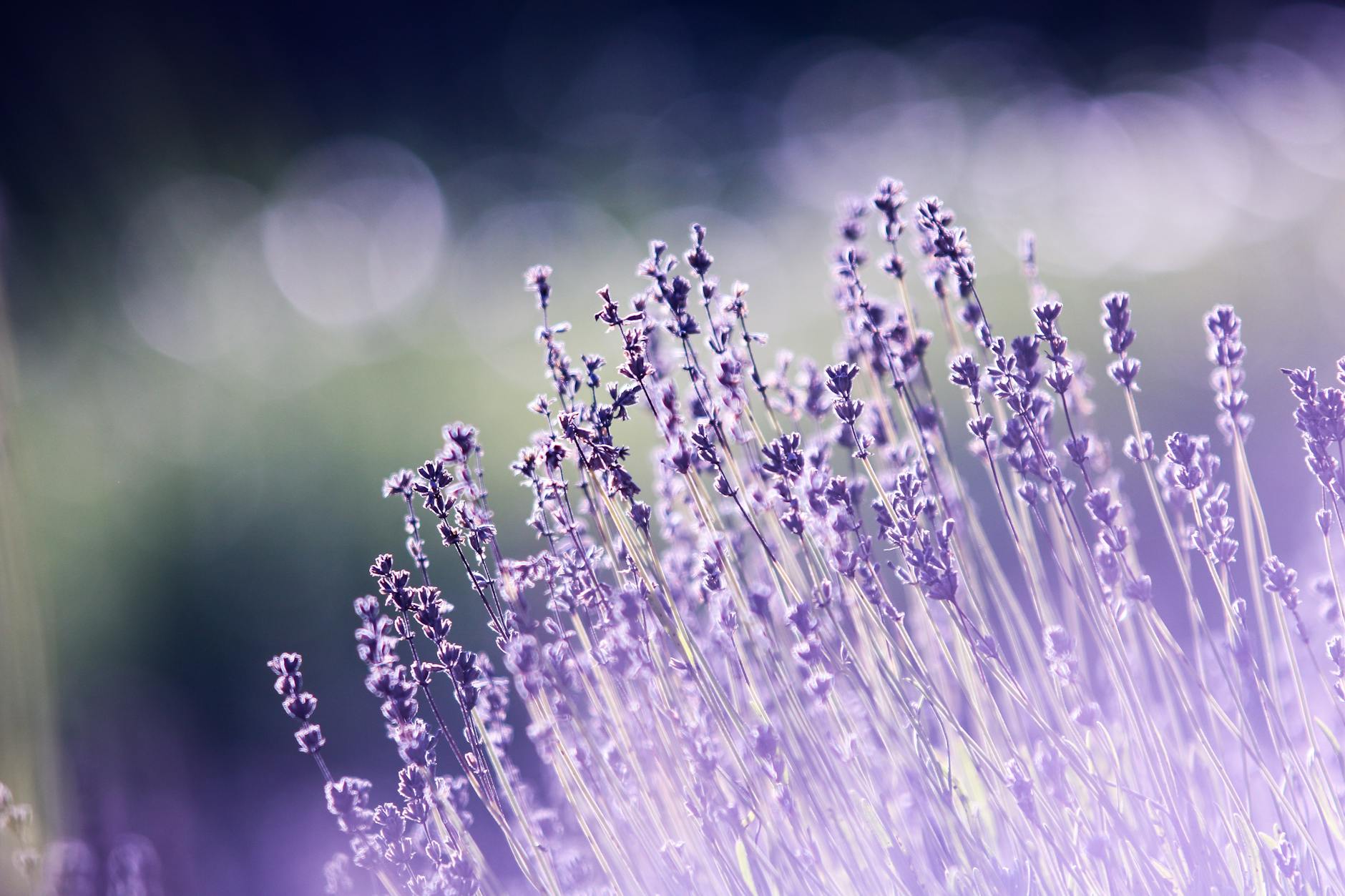
What is aromatherapy?
Aromatherapy is a holistic healing treatment that uses natural plant extracts and essential oils to promote health and well-being. This ancient practice harnesses the power of scent to influence mood, cognitive function, and physical health. Essential oils, the concentrated essences of plants, are the cornerstone of aromatherapy.
How essential oils work
Essential oils work through two primary mechanisms:
- Olfactory stimulation
- Topical absorption
When inhaled, the aromatic molecules of essential oils stimulate the olfactory system, which is directly connected to the limbic system in the brain. This connection explains why scents can trigger memories and emotions. When applied to the skin, essential oils are absorbed into the bloodstream, potentially offering systemic benefits.
| Method | Mechanism | Primary Benefits |
|---|---|---|
| Inhalation | Olfactory stimulation | Mood, cognitive function |
| Topical | Skin absorption | Physical symptoms, localized effects |
Benefits of aromatherapy
Aromatherapy offers a wide range of potential benefits:
- Stress reduction
- Improved sleep quality
- Enhanced mood
- Pain relief
- Boosted immunity
- Increased energy and focus
Safety precautions
While aromatherapy is generally safe, it’s important to follow these precautions:
- Always dilute essential oils before topical use
- Perform a patch test before widespread application
- Avoid ingesting essential oils unless under professional guidance
- Keep oils away from eyes and mucous membranes
- Consult a healthcare provider if pregnant, nursing, or have existing health conditions
Now that we’ve covered the basics of aromatherapy, let’s explore how specific essential oils can be used for stress relief.
Essential Oils for Stress Relief
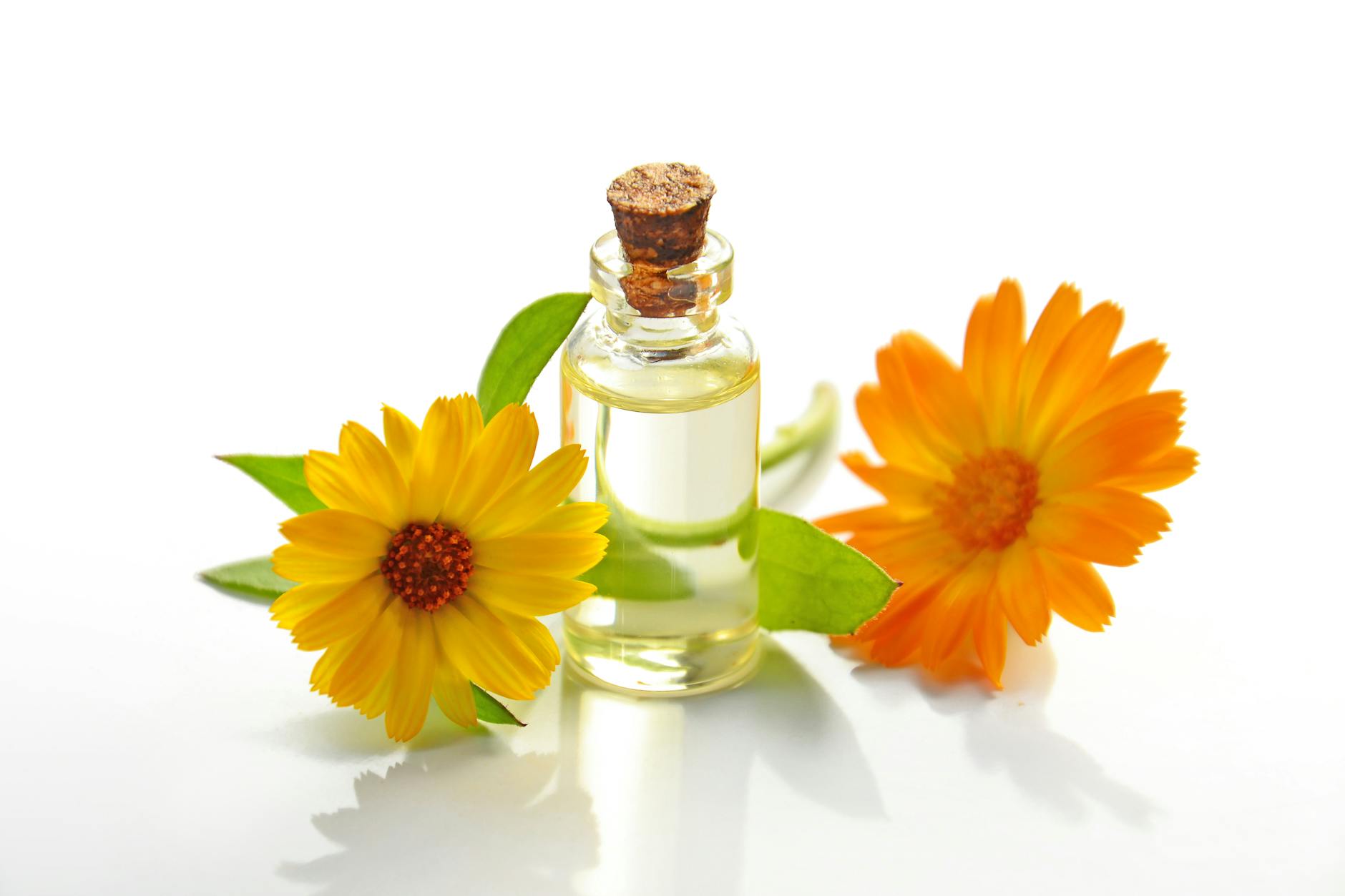
Lavender: The ultimate relaxation oil
Lavender is widely recognized as the go-to essential oil for stress relief. Its calming properties have been scientifically proven to reduce anxiety and promote relaxation. When inhaled, lavender can lower heart rate and blood pressure, creating a sense of tranquility.
Bergamot for mood elevation
Bergamot, with its citrusy aroma, is excellent for lifting spirits and reducing stress. This oil is known to stimulate the production of serotonin and dopamine, neurotransmitters associated with happiness and well-being.
Ylang-ylang to calm the mind
Ylang-ylang’s sweet, floral scent is particularly effective in calming an overactive mind. It helps to reduce tension and promotes a sense of inner peace, making it ideal for those experiencing stress-related mental fatigue.
Frankincense for grounding
Frankincense has been used for centuries in meditation practices due to its grounding properties. It helps to slow down rapid breathing and promotes a sense of calmness, making it an excellent choice for stress relief.
Blending stress-relief oils
Combining these oils can create powerful stress-relief blends. Here’s a simple guide:
| Oil Combination | Ratio | Benefits |
|---|---|---|
| Lavender + Bergamot | 3:2 | Relaxation + Mood Boost |
| Ylang-ylang + Frankincense | 1:1 | Mental Calm + Grounding |
| All four oils | 2:1:1:1 | Comprehensive Stress Relief |
To use these blends effectively:
- Add to a diffuser for aromatherapy
- Mix with carrier oil for massage
- Add a few drops to a warm bath
By incorporating these essential oils into your daily routine, you can create a powerful arsenal against stress. Remember to always use high-quality, pure essential oils and follow proper dilution guidelines for safe use. With these stress-relief oils at your disposal, you’ll be well-equipped to tackle life’s challenges with a calm and centered mindset. Now that we’ve explored oils for stress relief, let’s look at how essential oils can improve your sleep quality.
Improving Sleep with Essential Oils
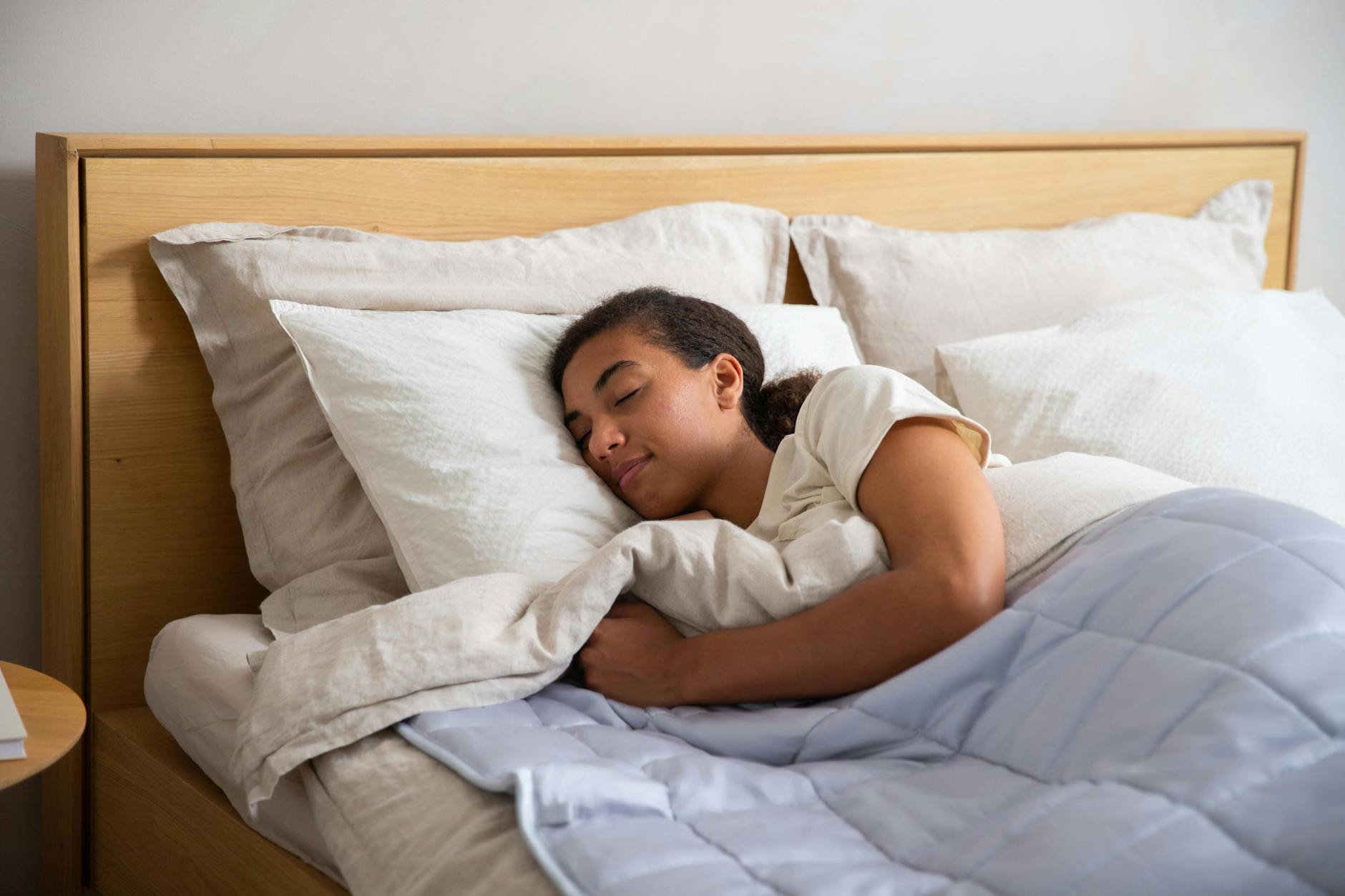
Chamomile for better sleep quality
Chamomile is renowned for its calming properties, making it an excellent choice for those seeking better sleep quality. This gentle, floral-scented oil helps to relax both mind and body, preparing you for a restful night.
Valerian root to combat insomnia
For those struggling with more persistent sleep issues, valerian root essential oil can be a game-changer. Its earthy aroma has been used for centuries to promote deep, restorative sleep and combat insomnia.
Cedarwood for a restful environment
Cedarwood essential oil creates a tranquil atmosphere in your bedroom, perfect for winding down after a long day. Its woody scent is grounding and promotes feelings of security and comfort.
Creating a bedtime aromatherapy routine
Incorporating these essential oils into your nightly routine can significantly improve your sleep quality. Here’s a simple routine to get you started:
- Begin diffusing your chosen oil 30 minutes before bedtime
- Practice deep breathing exercises with the oil
- Apply diluted oil to pulse points or use in a relaxing massage
| Essential Oil | Benefits | Application Method |
|---|---|---|
| Chamomile | Calming, relaxing | Diffuser, massage |
| Valerian Root | Combats insomnia | Diffuser, topical application |
| Cedarwood | Creates restful environment | Diffuser, room spray |
By consistently using these essential oils and creating a soothing bedtime routine, you’ll be well on your way to more restful nights and energized mornings. Next, we’ll explore how essential oils can be used to boost energy levels during the day.
Boosting Energy with Essential Oils
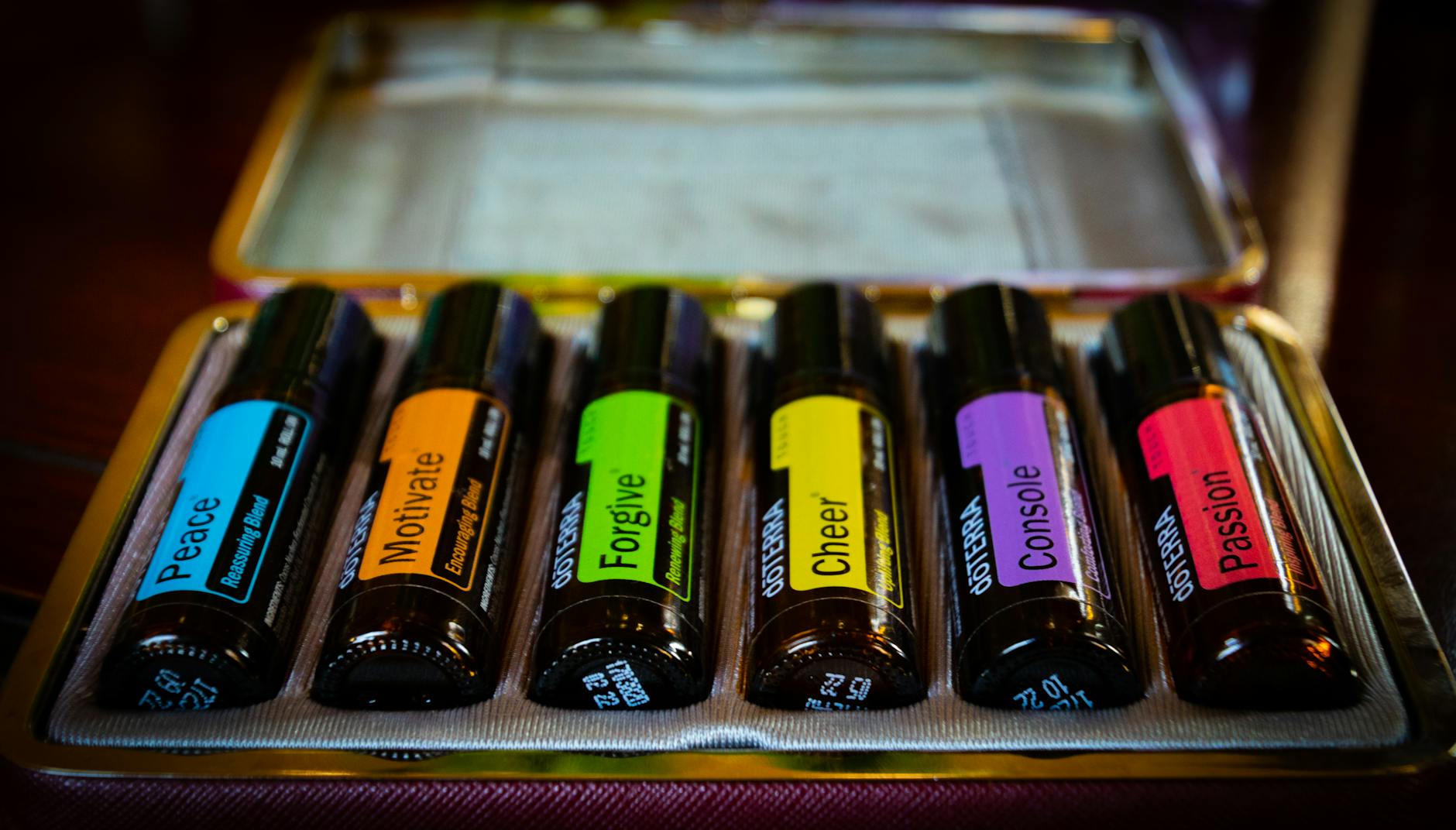
Peppermint for mental clarity
Peppermint essential oil is a powerhouse when it comes to boosting energy and mental clarity. Its invigorating scent can help sharpen focus and improve cognitive performance. Here’s how peppermint oil can enhance your mental acuity:
- Increases alertness
- Improves memory
- Reduces mental fatigue
- Enhances concentration
| Application Method | Benefits |
|---|---|
| Diffusion | Stimulates the entire room |
| Topical (diluted) | Provides targeted relief |
| Inhalation | Quick, on-the-go energy boost |
Citrus oils for an instant pick-me-up
Citrus essential oils are nature’s energy drinks. Their bright, uplifting scents can instantly elevate mood and increase alertness. Popular citrus oils include:
- Lemon
- Orange
- Grapefruit
- Bergamot
These oils are known for their ability to reduce stress and promote positivity, making them perfect for a midday energy boost.
Rosemary to combat fatigue
Rosemary essential oil is an excellent choice for fighting mental and physical fatigue. Its stimulating properties can help:
- Improve memory retention
- Enhance mental clarity
- Boost physical energy
- Reduce mental exhaustion
Eucalyptus for respiratory support and alertness
Eucalyptus oil is not only great for respiratory health but also for increasing alertness. Its cool, refreshing scent can:
- Clear the mind
- Improve focus
- Support breathing
- Increase oxygen intake, leading to better energy levels
By incorporating these essential oils into your daily routine, you can naturally boost your energy levels and maintain mental clarity throughout the day. Next, we’ll explore various application methods to help you get the most out of your aromatherapy practice.
Application Methods for Essential Oils
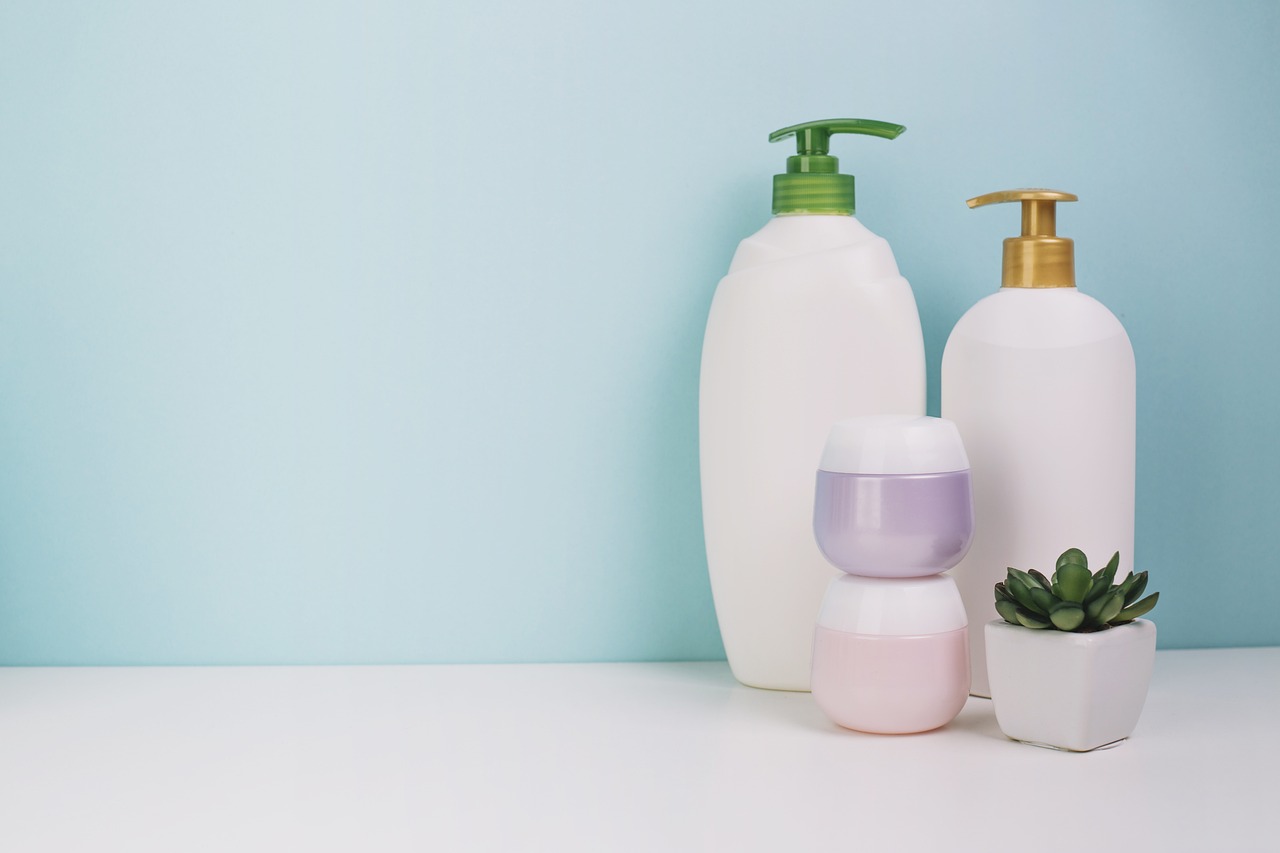
Diffusion techniques
Diffusion is one of the most popular methods for enjoying the benefits of essential oils. This technique disperses aromatic molecules into the air, creating a soothing atmosphere and allowing for easy inhalation. There are several types of diffusers available:
- Ultrasonic diffusers
- Nebulizing diffusers
- Heat diffusers
- Evaporative diffusers
| Diffuser Type | Pros | Cons |
|---|---|---|
| Ultrasonic | Silent, doubles as humidifier | Dilutes oils |
| Nebulizing | Pure oil diffusion, no water needed | Can be noisy, uses oil quickly |
| Heat | Inexpensive, no electricity required | Heat can alter oil properties |
| Evaporative | Simple to use, portable | Less effective for some oils |
Topical application and carrier oils
When applying essential oils directly to the skin, it’s crucial to dilute them with carrier oils. This prevents skin irritation and helps the oils absorb more effectively. Popular carrier oils include:
- Coconut oil
- Jojoba oil
- Sweet almond oil
- Grapeseed oil
Aromatherapy massage
Combining the power of touch with essential oils, aromatherapy massage offers a deeply relaxing experience. To perform an aromatherapy massage:
- Choose appropriate essential oils based on your needs
- Dilute the oils in a carrier oil
- Apply the mixture to the skin using gentle, circular motions
- Focus on areas of tension or discomfort
Bath and shower use
Adding essential oils to your bathing routine can transform a simple cleanse into a therapeutic experience. For baths, mix a few drops of oil with a carrier oil or Epsom salts before adding to the water. In showers, place a few drops on the shower floor, away from direct water flow, to create a steamy aromatherapy session.
Inhalation methods
Direct inhalation is a quick and effective way to enjoy essential oils. Try these methods:
- Steam inhalation: Add oils to hot water and inhale the steam
- Tissue method: Place a few drops on a tissue and inhale
- Aromatherapy jewelry: Use specially designed necklaces or bracelets
Now that we’ve explored various application methods, let’s move on to creating your personal aromatherapy toolkit.
Creating Your Aromatherapy Toolkit
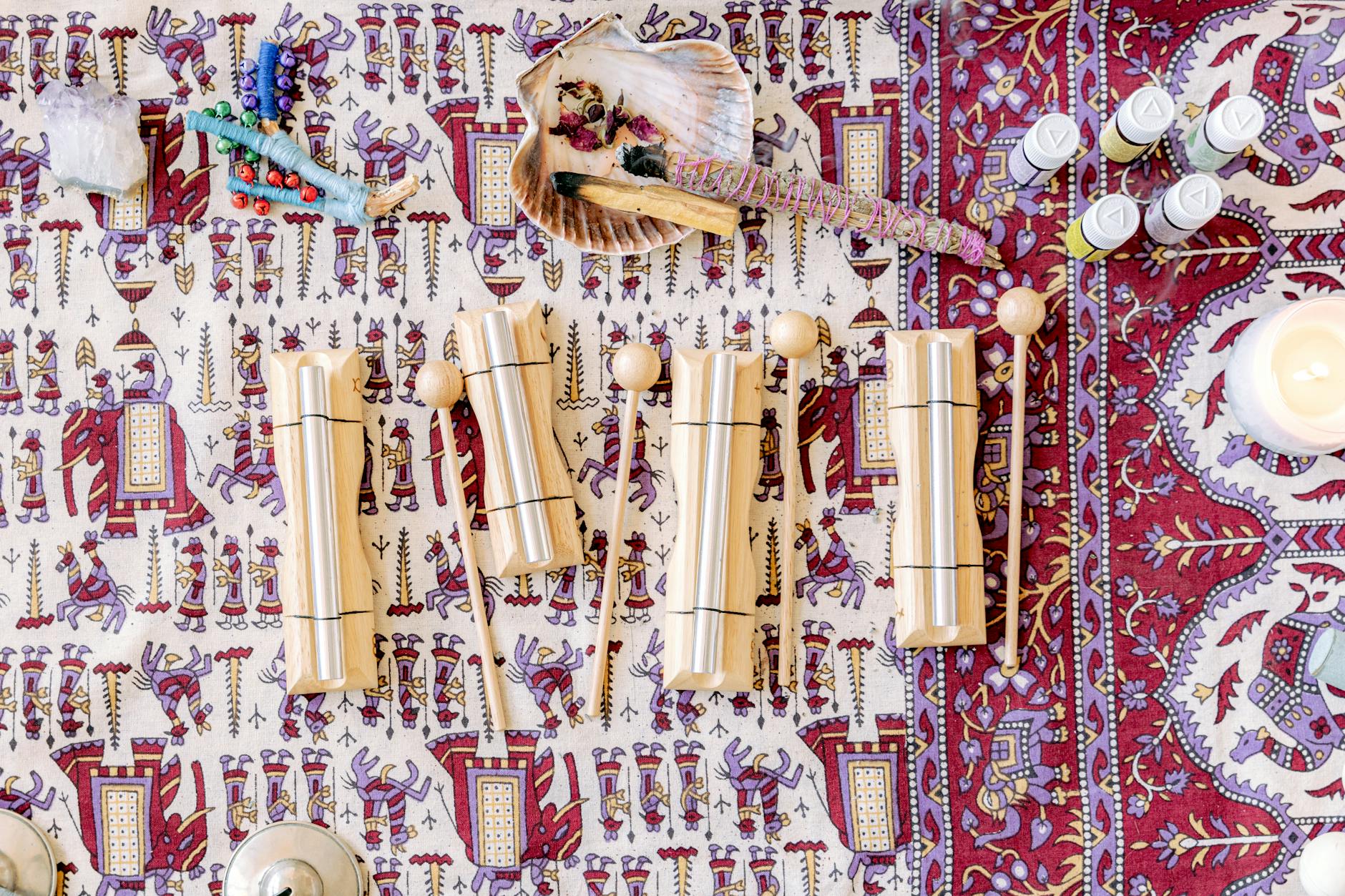
Essential oil selection guide
When creating your aromatherapy toolkit, selecting the right essential oils is crucial. Consider starting with versatile oils that offer multiple benefits:
- Lavender: calming, sleep-promoting
- Peppermint: energizing, focus-enhancing
- Eucalyptus: respiratory support, stress relief
- Tea Tree: antimicrobial, skin health
- Lemon: mood-lifting, cleansing
| Oil | Primary Benefits | Secondary Benefits |
|---|---|---|
| Lavender | Relaxation, Sleep | Skin health, Headache relief |
| Peppermint | Energy, Focus | Digestion, Muscle pain |
| Eucalyptus | Respiratory health | Stress relief, Immune support |
| Tea Tree | Antimicrobial | Skin care, Wound healing |
| Lemon | Mood enhancement | Air purification, Cleaning |
Storage and shelf life
Proper storage is essential to maintain the quality and effectiveness of your essential oils:
- Store in dark glass bottles to protect from light degradation
- Keep in a cool, dry place away from direct sunlight
- Tightly seal bottles after each use to prevent oxidation
- Label bottles with purchase date to track shelf life
Most essential oils have a shelf life of 1-3 years when stored correctly. Citrus oils typically have shorter shelf lives due to their high limonene content.
Quality considerations
When purchasing essential oils, consider these factors to ensure quality:
- Purity: Look for 100% pure essential oils without additives
- Sourcing: Choose oils from reputable suppliers with transparent practices
- Testing: Opt for brands that provide third-party testing results
- Botanical name: Ensure the label includes the plant’s Latin name
- Extraction method: Steam distillation or cold-pressing are preferred methods
Aromatherapy accessories
To fully utilize your essential oils, consider adding these accessories to your toolkit:
- Diffuser: For dispersing oils into the air
- Carrier oils: For dilution and topical application (e.g., jojoba, coconut oil)
- Roller bottles: For creating pre-diluted blends
- Glass dropper bottles: For mixing custom blends
- Essential oil jewelry: For on-the-go aromatherapy
With these elements in your aromatherapy toolkit, you’ll be well-equipped to harness the power of essential oils for various aspects of your well-being. Remember to always use essential oils safely and consult with a qualified aromatherapist or healthcare provider if you have any concerns.
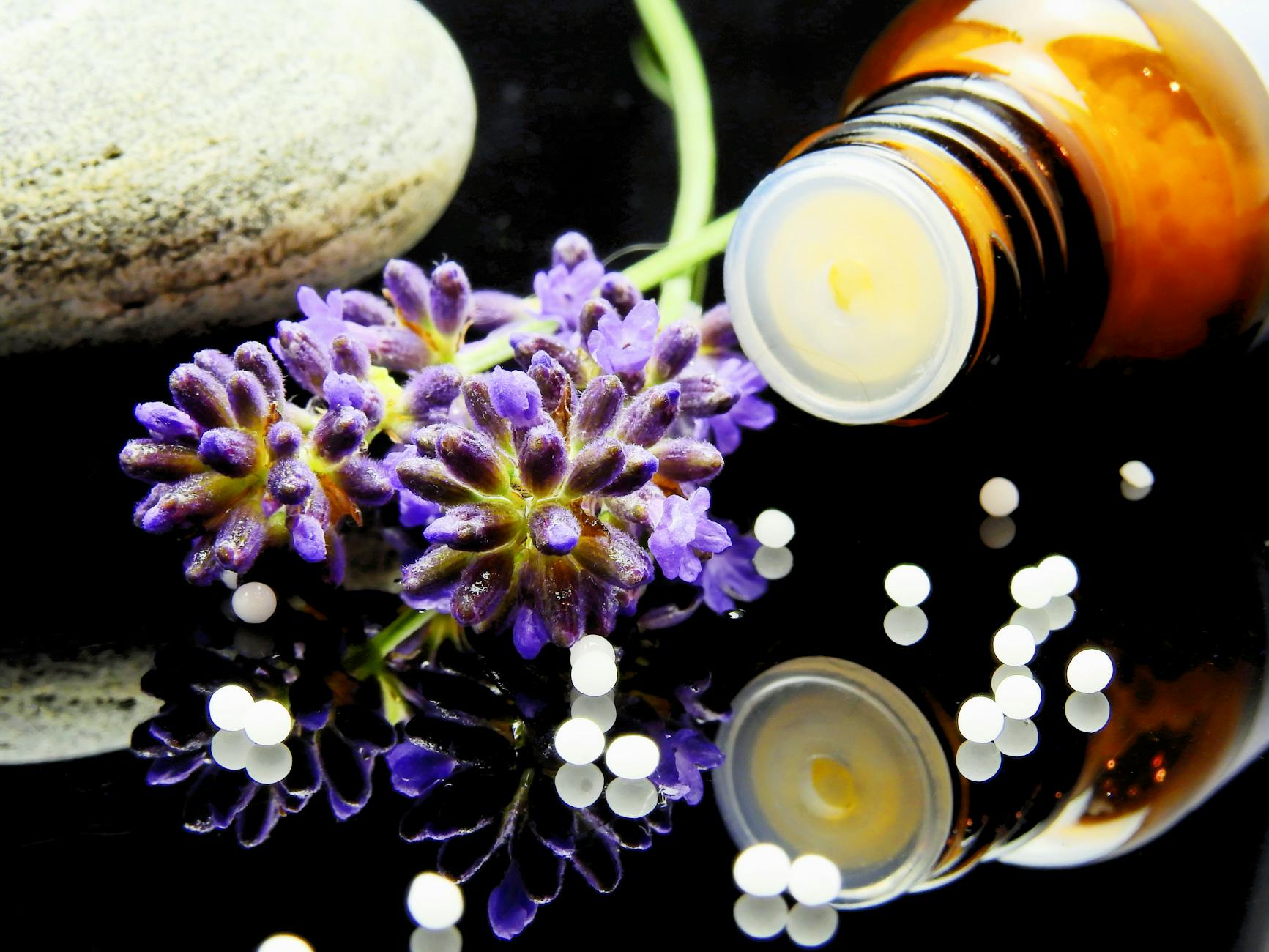
Aromatherapy offers a natural and effective way to manage stress, improve sleep, and boost energy through the use of essential oils. By understanding the basics of aromatherapy and selecting the right oils for your needs, you can create a personalized toolkit to support your well-being. Whether you’re looking to unwind after a long day, enjoy a restful night’s sleep, or invigorate your senses for increased productivity, there’s an essential oil blend that can help.
Remember to always use essential oils safely and responsibly, following proper dilution guidelines and application methods. As you explore the world of aromatherapy, don’t be afraid to experiment with different oil combinations and techniques to find what works best for you. With a little knowledge and practice, you’ll be well on your way to harnessing the power of essential oils to enhance your daily life and overall wellness.

